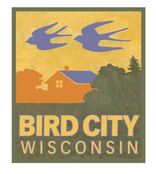TRAFFIC SIGNS, SIGNALS, & CONTROLS
Engineering > Traffic Signs, Signals, & Controls
Engineering > Traffic Signs, Signals, & Controls
Decisions relating to traffic control signs and signals requires careful planning, evaluation, and engineering. Following is some information to aid in understanding how and why the City of Wisconsin Rapids installs traffic control signs and devices.
Installation of street lights
- Street lighting is intended to light the street right of way. Lighting that is intended for security for private property is the responsibility of the property owner. Streetlights may be installed one street light per block (+ 300') on residential streets as identified on the official street light map. The City Engineer is to determine the location and need for the installation based on available funding and compliance with the official street lighting map. Street lighting in commercial zones should be installed in accordance to the AASHTO roadway lighting standards.
Speed limit signs
- Speed limit signs may be installed one sign in each direction per block (+300') on streets where appropriate. The City Engineer is to determine the location and need for the installation based on the classification of street, design speed, unique attributes, etc.
No truck signs
- No truck signs may be installed on each street intersecting a truck route. The City Engineer is to determine the location and need for the installation based on traffic patterns and volumes. Trucks may only travel on marked highways except for delivery. Any truck making a local delivery must travel the shortest distance from a state highway to the destination. Any truck using local streets as a short cut to their destination may be ticketed and fined.
Installation of warning signs
- The City Engineer is to determine the location and need for the installation based on engineering principles and practice, accident history, roadway geometry, traffic patterns, etc.
Children at play signs
- Children at play signs shall not be installed on public street right of way in the City of Wisconsin Rapids.
regulatory signs
Traffic Control (Yield signs, 2-way Stop signs, 4-way Stop signs, Traffic signals)
- The City Engineer continuously evaluates the need for traffic control. The objective of any public surface transportation system is to move vehicles, people, and goods as quickly, efficiently, and safely as reasonably possible. When evaluating options for traffic control, two of the five items from the following minimum requirements table must exist in order for there to be considered for installation:
No Control |
Yield Signs |
Stop signs 2-way |
Stop signs 4-way |
Traffic signal |
|
1) Average Volume/hour (8-hour period) Volume for 24 hours |
Less than 100 vehicles/hr Less than 1000 |
More than 100 vehicles/hr Over 1000 |
More than 250 vehicles/hr >=3000 |
300/hr - Major, 200/hr - Minor, 500/hr - Both 5000 balanced volumes |
Meets warrants of the MUTCD |
2) Visibility |
No obstructions in the vision triangle |
Minor obstructions in the vision triangle |
Vision triangle obstructed |
Blind |
|
3) Right angle accident in a 12 month period |
No accidents |
2 or more |
3 or more |
5 or more |
5 or more |
4) Street classification |
Local / Local |
Local / Local Thru / Local Collector / Local |
Thru street Collector / Local Arterial / Local |
Collector / Arterial Arterial / Arterial |
Arterial / Arterial |
5) Other factors |
T-intersection |
Meets pedestrian or school crossing warrants |
Pavement markings
Yellow curb
- Curb may be painted yellow only in conjunction with a no parking zone or a channelizing island.
- Double yellow centerline may be painted on streets classified as a minor arterial or higher. These requests will be referred to the City Engineer.
- Solid white edge line for parking and/or bike lanes may be installed on streets classified as a minor arterial or higher that are 48' and wider. These requests will be referred to the City Engineer.
Operation of traffic signal installations
Hours of operation
- Normal operation of some of the traffic signal system is 6:30 AM to 11:30 PM.
- Traffic signal timing is determined by studying and analyzing traffic patterns. There can be several signal timing schedules programmed for each intersection to coincide with varying traffic volumes.
- Some traffic signal installations are traffic actuated and may run 24 hours a day to enhance safety.



